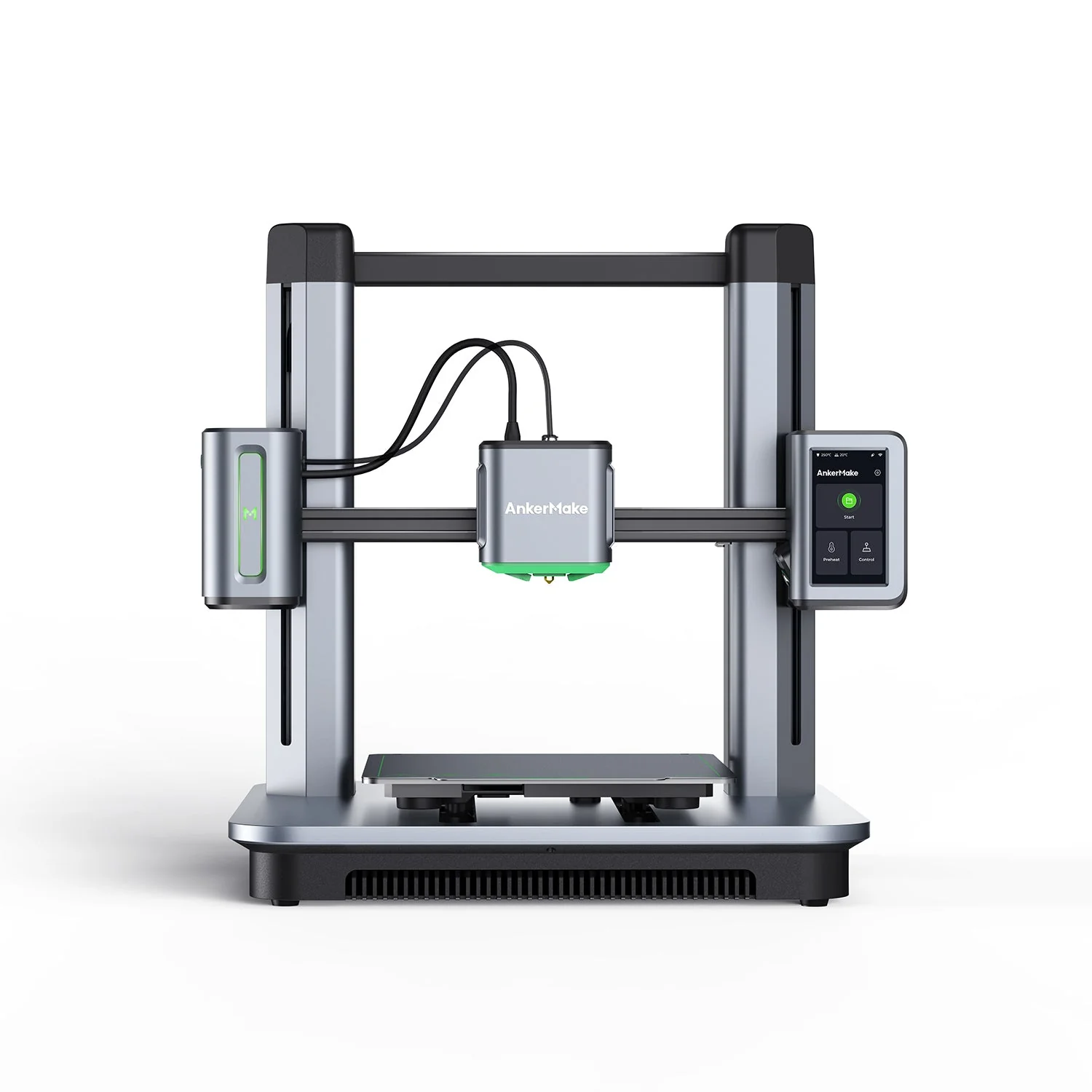Compare KP3S PRO V2 vs M5
Comparison between the best 3D printers
Choose the best 3D printer at the best price. The cheapest 3D printers are here.
Buy a 3D printer here with 3D Fila.
 |
 |
|
| Model | KP3S PRO V2 |
M5 |
| Printing Material | Filament | Filament |
| Buy Filament for Kingroon KP3S PRO V2 | Buy Filament forAnkerMake M5 | |
| Estimated price | $229,00 | $497,00 |
| Manufacturer | Kingroon | AnkerMake |
| Release Year | 2024 | 2023 |
| Print Volume [mm] | 220x220x250 | 235x235x250 |
| Printer Size [mm] | 420x400x450 | 502x438x470 |
| Weight [kg] | 12,6 | 12,6 |
| Power Loss Recovery | NO | YES |
| Enclosed printer | NO | NO |
| Bed Leveling | Automatic | Automatic |
| Filament End Sensor | NO | YES |
| Bed type | Heated | Heated |
| Power supply system | Direct Drive | Direct Drive |
| Standard nozzle | 0,4 | 0,4 |
| Maximum Nozzle Temperature [°C] | 260 | 260 |
| Maximum Bed Temperature [°C] | 100 | 100 |
| Maximum printing speed [mm/s] | 350 | 500 |
| Filament holder | YES | YES |
| Camera for supervision | NO | NO |
| Recommended filaments | PLA, PETG, TPU | PLA, PETG, ABS |
| Recommended slicers | Cura, Orca Slicer | AnkerMake Studio (macOS, Windows), Simplify3D, Ultimaker Cura, PrusaSlicer |
| Maximum Resolution [mm] | 0,01 | 0,1 |
| Processor | ||
| Display | LCD Mono | Touchscreen 4,3'' |
| Power Supply | 300 W | 350 W |
| Connectivity | USB-C / MicroSD / Ethernet | Wi-Fi, USB-C, OTA Upgrade |
| Operating systems | Windows, Mac, Linux | Windows, Linux, Macbook |
| Date of registration in the system | 2025-03-18 | 2024-07-08 |
| Release date | 2024 | 2023 |
| Extra features | The Kingroon KP3S Pro V2 is a high-speed FDM 3D printer with Klipper firmware, ensuring fast and precise prints. It features linear rails on all axes, a Direct Drive extruder with a 9.5:1 gear ratio, and an efficient ceramic heater. It includes an inductive sensor for automatic bed leveling, a PEI magnetic bed, a built-in accelerometer for vibration calibration, and Wi-Fi, Ethernet, and USB connectivity for remote control. | The AnkerMake M5 printer stands out for its impressive print speed, reaching up to 500mm/s. It features AI print monitoring, an integrated camera for creating timelapses, auto-leveling bed with pressure sensor, direct extruder, flexible PEI-coated build plate, and Wi-Fi and USB-C connectivity. Assembly is quick and easy, and the printer is designed to deliver high print quality and ease of use. |
| Support for multiple colors and materials (AMS and CFS) | NO | NO |
Notes * |
||
| Cost-benefit | 7 / 10 | 7 / 10 |
| Hardware | 0.9 / 10 | 4 / 10 |
| Tela | . | . |
| Print volume | 3 / 10 | 3 / 10 |
| Performance | 3 / 10 | 4 / 10 |
Conclusion |
| In comparing the Kingroon KP3S PRO V2 and the AnkerMake M5, both printers cater to users seeking high-quality 3D printing capabilities, yet they embody distinct strengths and weaknesses that make them suited for different user needs and budgets. The Kingroon KP3S PRO V2 offers a more budget-friendly option without sacrificing essential features. It utilizes Klipper firmware for improved printing speeds and accuracy, with an impressive maximum printing speed of 350mm/s. Its automatic bed leveling and optical sensor further simplify the setup process, while an efficient heated bed enhances material compatibility. However, it lacks advanced features like power loss recovery and a filament end sensor, which may be vital for users prioritizing convenience and reliability in longer print jobs. On the other hand, the AnkerMake M5 comes with a higher price tag, reflecting its advanced capabilities. It supports faster print speeds of up to 500mm/s and comes equipped with an integrated camera for monitoring prints and creating timelapse videos. With features like power loss recovery and a filament end sensor, the M5 enhances user experience through improved control and oversight. The touchscreen interface further improves usability, making it a more intuitive choice for those investing more into their 3D printing journey. In conclusion, while the Kingroon KP3S PRO V2 stands out for its rapid performance at a more accessible price, the AnkerMake M5 excels in advanced features and convenience, justifying its higher cost for users who demand reliability and ease of use. Therefore, the choice between these two models largely depends on whether a user prioritizes affordability or advanced functionality and support in their 3D printing endeavors. |

